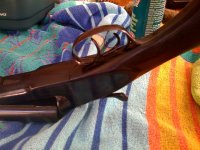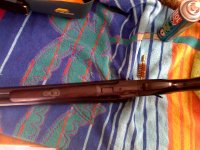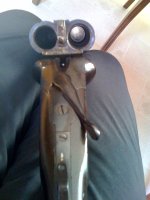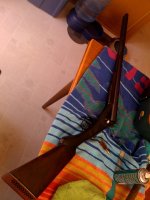the_pragmaticist
New member
With the passing of a family member, I have become the caretaker of several new firearms. Among them was a very old side by side which some quick research has identified as an L. C. Smith shotgun. I have been unable to find a serial number on it. It has several patent dates stamped on the barrel, the most recent being 1905. It has two triggers and no visible hammers. The break is tight (haven't cleaned it up yet and it was sitting for...decades?) but it does open and the automatic extractors seems to be functional. There is surprisingly little rust, though the stock does announce itself to be very very old.
I was hoping someone might be able to help me with some ID. I will try to take some pictures in a day or two and put them up for better ID, but are there any specific markings I should be looking for to find out if this gun was made by Marlin or by the original LC Smith factory? Is there any way to narrow down the date of manufacture without a serial number, or is there somewhere sneaky that there might be a serial?
As far as functionality, I noticed that only the front trigger actually works. I don't even know which barrel this indexes. I did note that (from a shoulder mounted point of view) the left firing pin is "stuck" out and the right one moves freely, so clearly one of them is not doing what it should. Should the pins retract when the action is opened? If so, would it be advisable to take a small whack at the extended pin with a punch to break it free?
Lastly...I don't believe this to be damascus steel. It looks like a normal set of barrels and I do believe the old gun would love to send a present to a pheasant again after all these years. Assuming I can fix the firing pin issue in some way, do I need to take such a gun to a gunsmith for a safety checkup or do they tend to hold up over the years?
Thanks for any info...if anyone knows more, it's you guys.
edit - clarified dates
I was hoping someone might be able to help me with some ID. I will try to take some pictures in a day or two and put them up for better ID, but are there any specific markings I should be looking for to find out if this gun was made by Marlin or by the original LC Smith factory? Is there any way to narrow down the date of manufacture without a serial number, or is there somewhere sneaky that there might be a serial?
As far as functionality, I noticed that only the front trigger actually works. I don't even know which barrel this indexes. I did note that (from a shoulder mounted point of view) the left firing pin is "stuck" out and the right one moves freely, so clearly one of them is not doing what it should. Should the pins retract when the action is opened? If so, would it be advisable to take a small whack at the extended pin with a punch to break it free?
Lastly...I don't believe this to be damascus steel. It looks like a normal set of barrels and I do believe the old gun would love to send a present to a pheasant again after all these years. Assuming I can fix the firing pin issue in some way, do I need to take such a gun to a gunsmith for a safety checkup or do they tend to hold up over the years?
Thanks for any info...if anyone knows more, it's you guys.
edit - clarified dates
Last edited:




